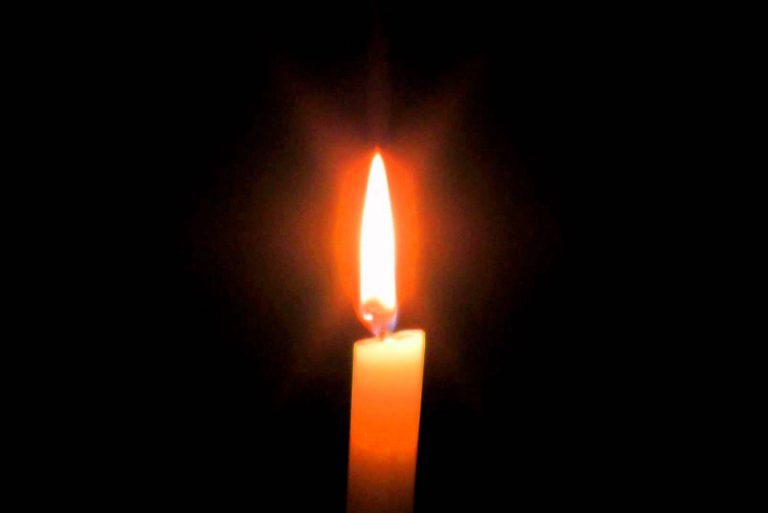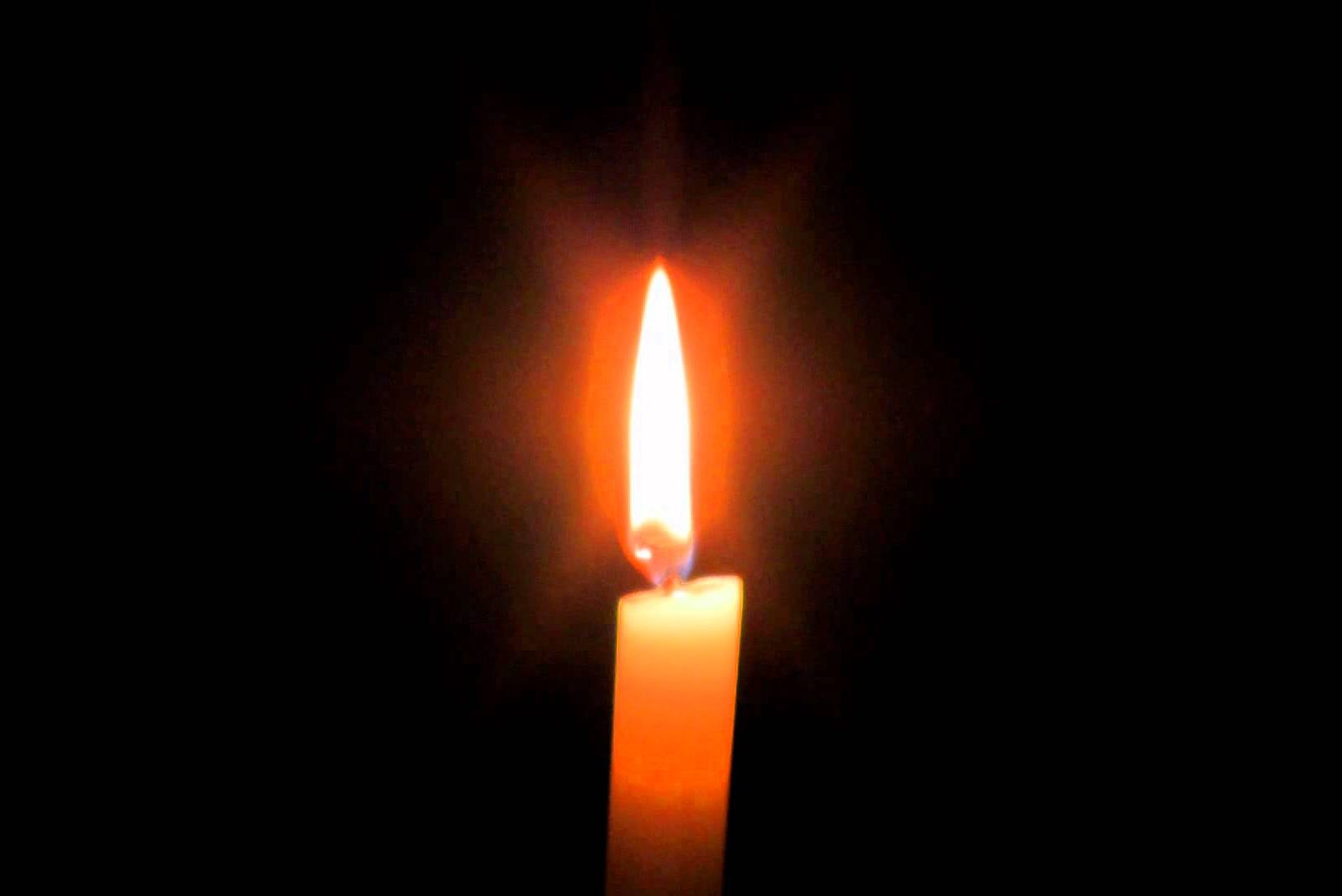Candles highlight the performance of four important religious observances. The Mishnah in Pesachim instructs that “on the night of the fourteenth of Nisan we search for chametz by the light of a candle.” Chametz signifies not merely the physical process of fermentation leading to seor, but also the fermentation of deeds, of our inner beings. We therefore carefully search and look for any failings and shortcomings in all areas of life – kol makom shemachni, sin bo chametz – in any area of our life where we may have brought in leaven, in chorin and sedakin, in all cracks and crevices of our existence. Thus, we may only fulfill this Halachic requirement through the use of a ner – a candle with a single wick, rather than a multi-wick avukah – torch, which would prevent us from reaching into the depths of our minds and hearts, and thereby overlook failures and shortcomings not superficially apparent or obvious.
 The lighting of Sabbath candles formally ushers in the Sabbath in the home. A minimum of two candles are lit, symbolically representing the two forms of the fourth commandment: zachor -“Remember the Sabbath day to keep it holy,” in Shemot, and shamor “Observe the Sabbath day to keep it holy,” in Devarim. The candles should be lit on the table where the Shabbat meal is eaten, and should be large enough to burn during the meal and well into nightfall, because ultimately the reason for the lighting of Sabbath candles is to create an atmosphere, a cohesive family unit. The Talmud defines the need for Sabbath candles as shalom bayit. The holiness of the Sabbath day is meant to create a peaceful, wholesome, tranquil, and happy Jewish home. It is any wonder, then, that Jewish housewives, who were given the special privilege of lighting the Sabbath candles, offer a moving and emotional prayer prior to the hadlakat ha’nerot in which they ask God to instill shechinatecha beinenu, “His peaceful and bountiful providence among us”?
The lighting of Sabbath candles formally ushers in the Sabbath in the home. A minimum of two candles are lit, symbolically representing the two forms of the fourth commandment: zachor -“Remember the Sabbath day to keep it holy,” in Shemot, and shamor “Observe the Sabbath day to keep it holy,” in Devarim. The candles should be lit on the table where the Shabbat meal is eaten, and should be large enough to burn during the meal and well into nightfall, because ultimately the reason for the lighting of Sabbath candles is to create an atmosphere, a cohesive family unit. The Talmud defines the need for Sabbath candles as shalom bayit. The holiness of the Sabbath day is meant to create a peaceful, wholesome, tranquil, and happy Jewish home. It is any wonder, then, that Jewish housewives, who were given the special privilege of lighting the Sabbath candles, offer a moving and emotional prayer prior to the hadlakat ha’nerot in which they ask God to instill shechinatecha beinenu, “His peaceful and bountiful providence among us”?
To be a genuine and creative Jew, however, requires more than a searching soul or even a peaceful home. Judaism calls for openness and honest identification. It calls for a pride in one’s Jewishness, even to the point of pirsumei nisa. Judaism is incomplete when it simply revolves around institutions, organizations, temples, or Federations. Judaism requires proud individual Jews willing to be known and counted as Jewish public relations agents. Thus, the Halachic requirement to light Chanukah candles, so that we may “glorify Your name for Your miracles, salvation, and wondrous acts”; not merely in historical and passive terms, but bayamim liahem bazman hazeh-in a personal, present, and proud sense-“Who wrought miracles for our forefathers in former days, at this season.”
For Judaism to be maintained “at this season” bazman hazeh, it must relate to a living Jew, to a Jew willing to observe and look at candles directly and closely, and try to comprehend their relevant meaning. The law is that if one kindled the Chanukah menorah above twenty amah lo asah kelum-above twenty amot he accomplished nothing-because it is not obvious. What is not obvious? Certainly, the very same candles are lit, on time, according to all Halachic stipulations, what then is the psul? Perhaps the disqualification is based on the unwillingness to relate the mitzvah to a living Jew-to a gavra. Judaism cannot be camouflaged or hidden. Mitzvot cannot be placed beyond the reach of a living person, beyond human sight. The Jew unwilling to declare his allegiance to Halacha; his obedience to Shabbat, his concern for Kashruth, his commitment to intensive Jewish education, his faith in God and trust in His nation-such a Jew has done nothing. His Judaism is impractical, institutional, lacks pride, and misses the essence of pir-sumei nisa. Such Jews eventually assimilate. Such Judaism relates to ideas at best, but never to living people.
The Rambam, in elaborating on the uniqueness of lighting Chanukah candles, writes: “One must be extremely careful in fulfilling the mitzvah of lighting Chanukah candles, for it is a particularly special and adored mitzvah.” The Magid Mishnah, in citing the ‘Mlmudic source for Rambam’s emphatic statement, quotes the Talmud in Shabbat: “Rav Huna said that one who persists in lighting Chanukah candles is assured of children who will become talmidei chachomim.” In verifying the actual source in the Talmud, we find Rav Huna’s statement as reading: “One who is careful with the candle,” which Rashi interprets as being careful about the mitzvah of lighting both Shabbat and Chanukah candles; which would then result in the light of Torah.
It would be appropriate to conclude, then, that authentic, proper, and genuine Judaism requires first a wholesome Jewish home – Ner Shabbat. Judaism can’t and won’t be maintained without a tranquil, unified, family-oriented shalom bayit that is created and maintained uniquely through the Shabbat. When a Jewish home is created, it can only be sustained through pirsumei nisa – through an open, public, proud, and pronounced Jewish identification ready to be shared personally and individually. Therefore, says Rav Huna, the guarantee for children maintaining and sustaining Yiddishkeit is not institutional Judaism, but rather Ner Shabbat and Ner Chanukah. Why? Because Ner Hashem nishmat adam – God’s candle is the soul. Individual Jews, children and adults related to personally and directly, they have souls, their light is God’s world; not buildings, not organizations, not even schools. They possess no neshama. They have no lights.
One critical question yet remains: How does a Jew learn to distinguish and observe the inner meaning, the hidden mysteries, the mystique of Jewish candles? The secret is inherent in the one remaining candle – the Havdalah candle. To understand the light of Judaism, one needs to be reminded that our Sages instituted for the Havdalah to be recited in Shmoneh Esreh adjacent to the blessing and request for wisdom – daat. We ask of God, the Source of all knowledge, to grant us knowledge, understanding, and discernment, for without wisdom how can we distinguish, how can we be mavdil, between holy and profane, between light and darkness, between Israel and all other nations, and between Shabbat and weekdays?
Without the bright light, not of one wick but of the great big torch of the Havdalah candle, composed of many wicks, how can we understand that indeed we possess human shortcomings requiring bedikat chametz? How can we be cognizant of Shabbat’s beauty and peace? How can we be expected to demonstrate Chanukah’s pride and pirsumei nisa? (Im ein daat havdalah minain?)
If we possess no wisdom and knowledge, how can we possibly differentiate between good and evil, light and darkness, sacred and profane? If we possess no Jewish wisdom and knowledge, how can we differentiate between Jew and non-Jew? Halachic and non-Halachic Jew? Chametz and matzah? Shabbat and chol? If we possess no basic education and wisdom, how can we observe and differentiate? How can we light any candles and enlighten our own existence?
A famous Viennese surgeon once told his students that a doctor needed two gifts: freedom from nausea and the power of observation and differentiation. He then dipped his fingers into a bitterly nauseating fluid and licked it off, requesting them to do the same. They did it immediately without flinching. With a grin, the master surgeon said, “You have passed the first test well, but not the second, for none of you noticed or observed that I dipped my first finger in but licked the second.”

